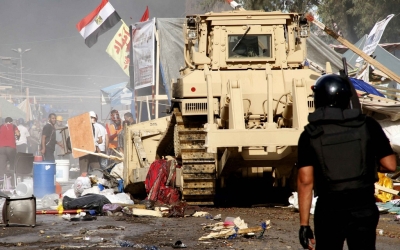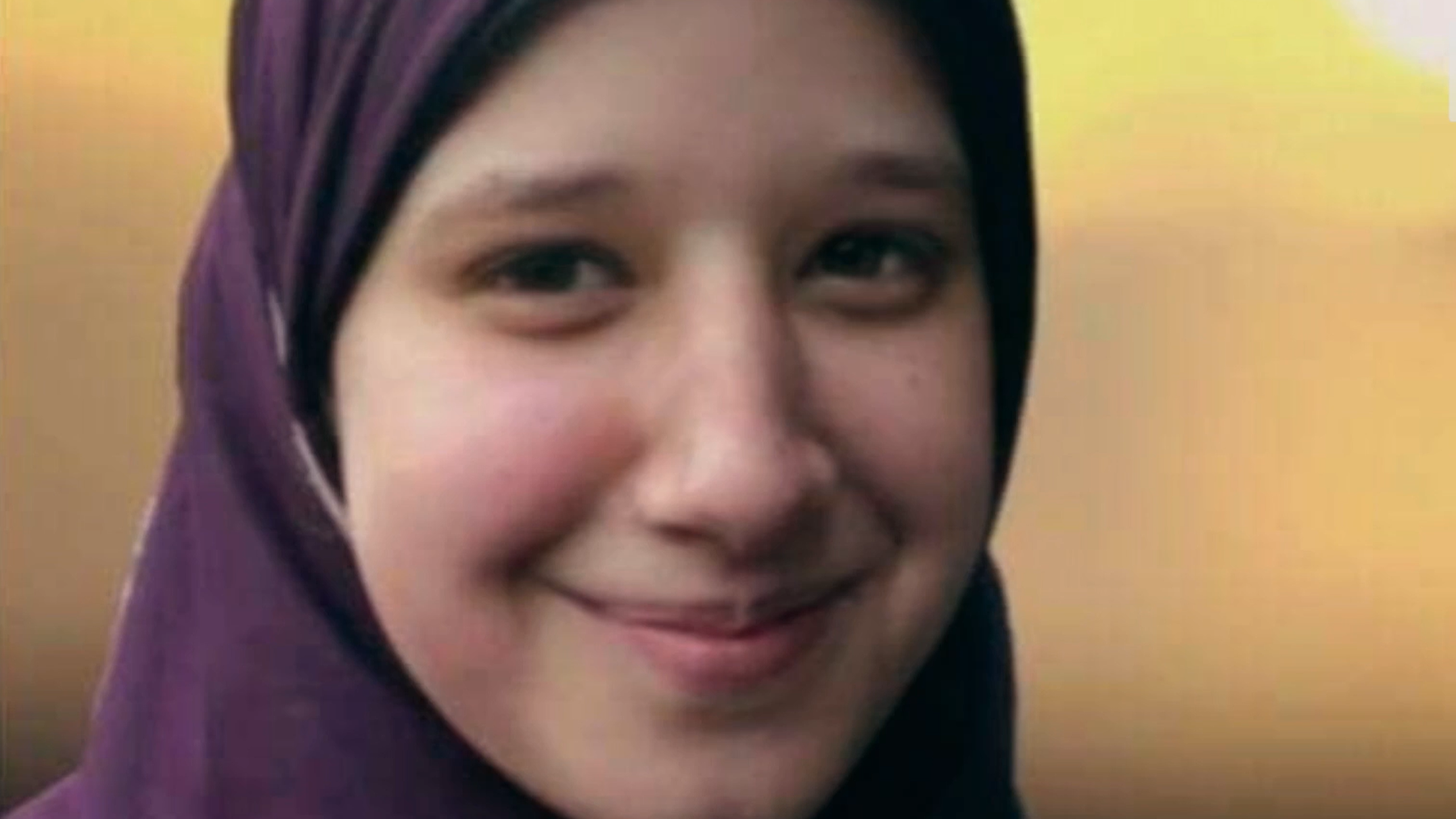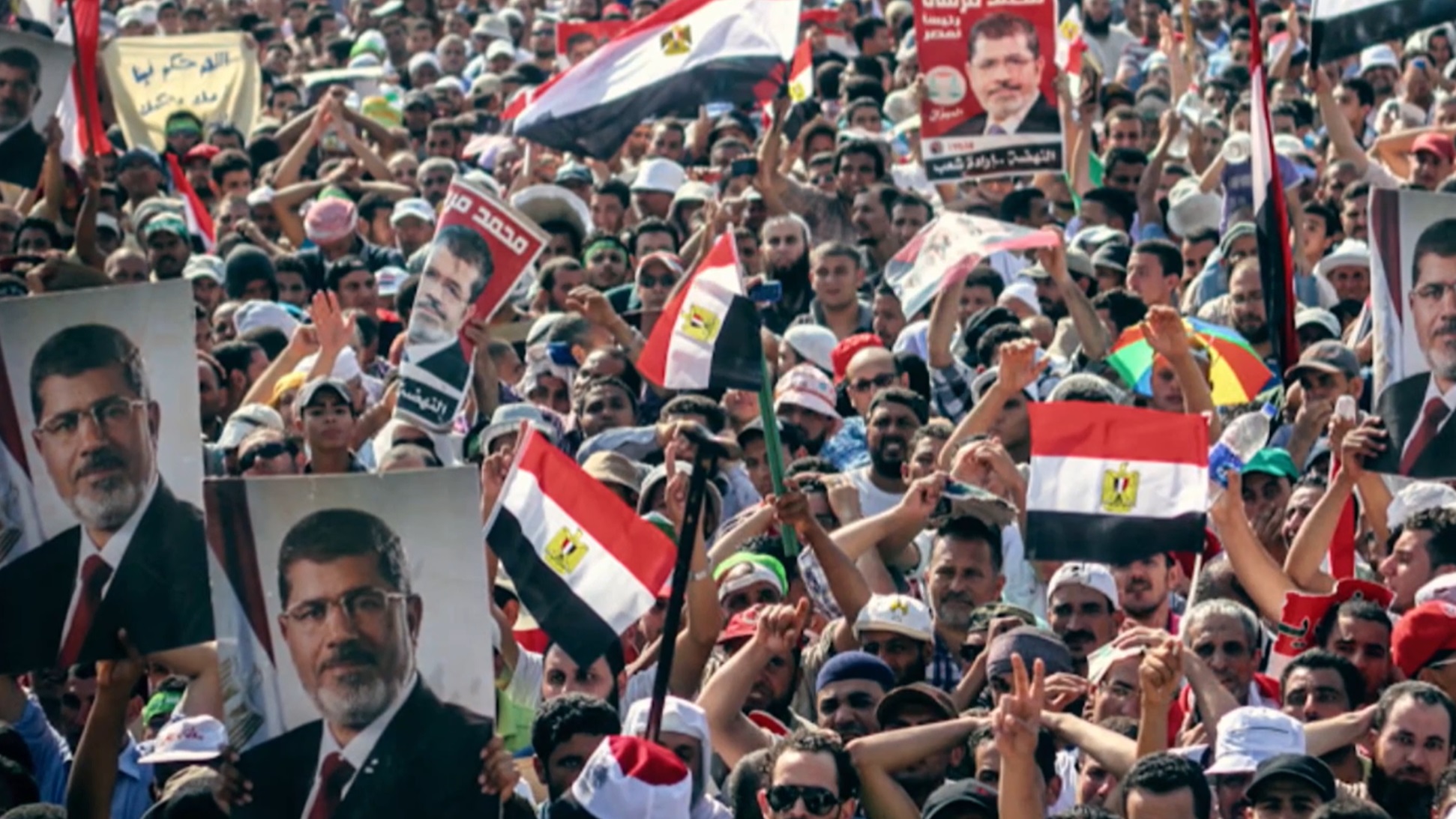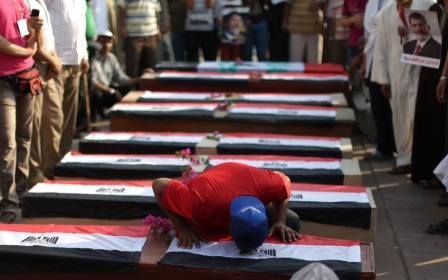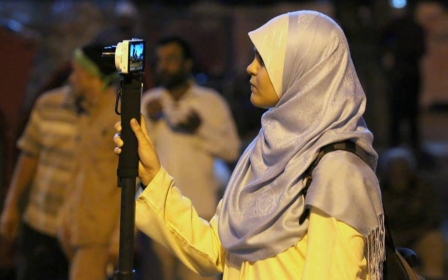Memories of a Massacre: Revisiting Rabaa and the end of the Egyptian revolution
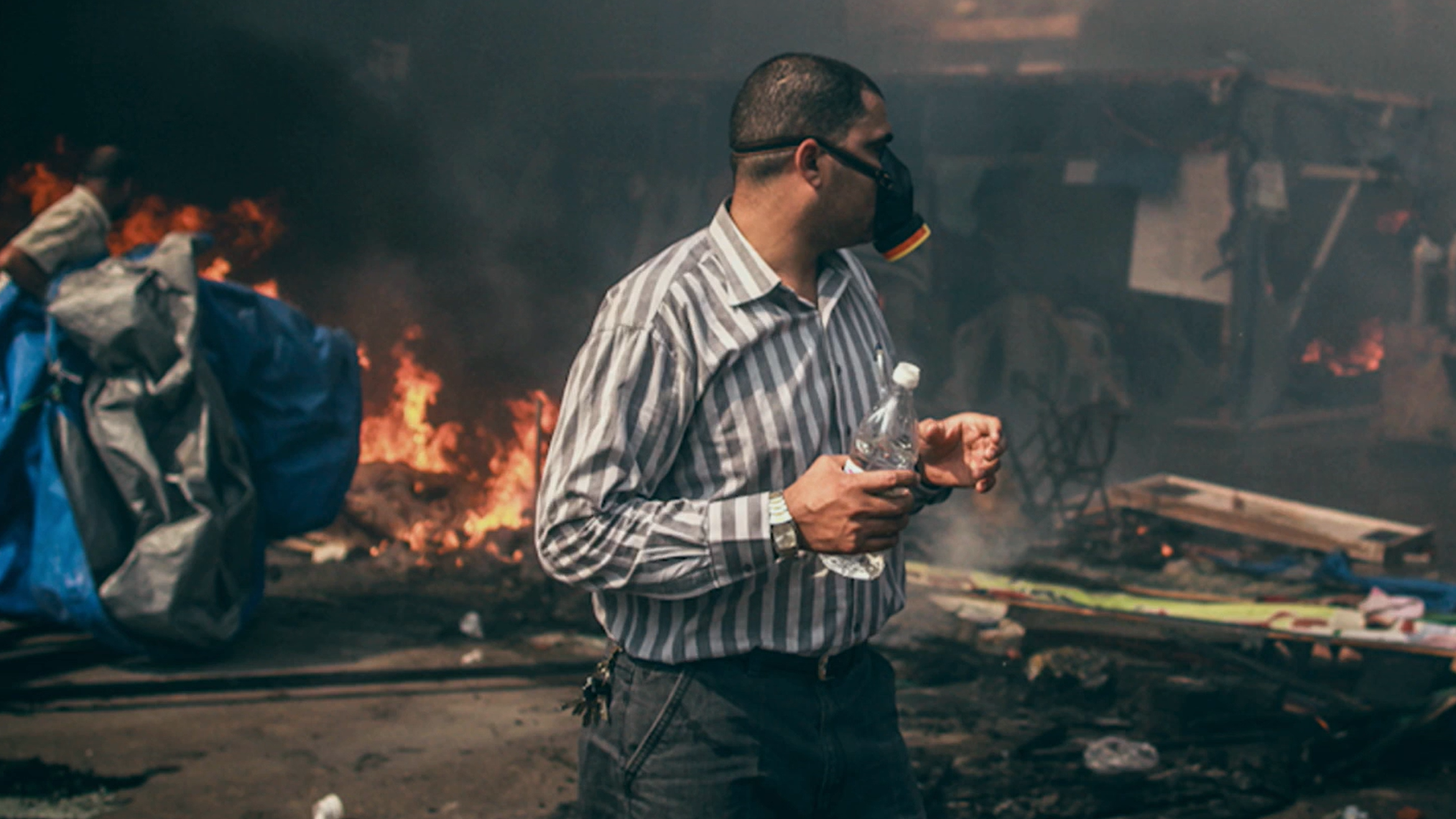
A friend of Asmaa el-Beltagy describes her as a butterfly who flew away “without saying goodbye", in what is a fitting metaphor for her last moments alive.
Dying on a hospital floor, the teenager’s eyes float around serenely as panicked protesters and medics try to save her life.
At just 17, Asmaa became one of the hundreds of people shot by snipers, burned alive, and crushed by bulldozers in a mass killing perpetrated by the Egyptian security forces on the morning of 14 August 2013.
Captured on camera and included in Nicky Bolster’s Memories of a Massacre, the scene of the young woman’s end is incredibly moving.
Human rights groups and activists have long established the facts about the worst massacre in Egypt's recent history, which resulted in around a thousand deaths.
The Rabaa massacre was also one of the most visually documented atrocities in modern history, with photographs and videos capturing the near full extent of devastation and culpability; the corpses piled up in mosques, the wailing protesters dragging away lifeless bloodied bodies and the scene of snipers stationed on rooftops making no attempt to conceal their positions as they pick their shots with ruthless calm.
Despite that body of evidence, Bolster’s documentary, which marks the tenth anniversary of the killings, is a rare English language testament to the massacre, which despite its death toll has not drawn anywhere near the infamy of other similar killings, such as the Tiananmen Square massacre.
In her film, which was produced by Noon Films, the veteran filmmaker who honed her craft with productions for the BBC, ITN, Netflix, and Apple TV, amongst others, constructs a narrative that bravely places the Rabaa massacre as the concluding chapter of a process of counter-revolution.
One that was led by the Egyptian military after the fall of former Egyptian President Mubarak in January 2011.
From hope to coup
Effectively split into two parts, the first half looks at the aftermath of the 25th January revolution and the spirit of hope that it gave birth to.
The descriptions of a festival atmosphere and the coming together of Egyptians from all walks of life will be familiar to anyone who spent time in Tahrir Square in the immediate aftermath of Mubarak’s fall.
It is during this period that the Muslim Brotherhood’s effective organisational infrastructure went to work in preparation for the country’s first democratic presidential election.
Their chosen candidate was a soft-spoken academic from a “fellah” or rural background called Mohamed Morsi, who despite being a little-known figure at the outset of his campaign managed to narrowly win the contest and become the country’s first freely elected leader.
Morsi’s task was formidable and while he took control of the country’s most revered institution, the actual seat of power remained with the military.
Fuel shortages and fears of an Islamist takeover, probably stoked by the deep state, threatened the new president’s grip on power and undermined his promise of a new dawn for all Egyptians.
Presented with what is effectively a poisoned chalice, Morsi hoped to mitigate the risk of a military coup by appointing the seemingly meek and dutiful General Abdel Fattah el-Sisi as his defence minister.
Sisi, as we have learned since, was waiting for his moment, playing both sides until mass protests organised by the Tamarrod ("Rebellion") movement brought Tahrir Square to a standstill once again.
Siding “with the people”, Sisi made his move in late June 2013, first in the form of an ultimatum for the president to reach a compromise with the protesters and then by deposing Morsi.
The month between the coup and the massacre was marked by futile attempts by western mediators to reach a political agreement between supporters of Morsi and Egypt’s new military rulers.
Meanwhile, protesters demanding Morsi’s restoration gathered in Cairo’s Rabaa Al-Adawiya Square where they staged a sit-in, refusing to leave until their demands were met.
Massacre
One of Bolster’s notable achievements is managing to convey the “matter of factness” with which the Egyptian authorities conducted the massacre.
The killings are preceded by Sisi’s adoption of a Pinochet-esque set of sunglasses and declaration to clear the square in a speech.
On the day itself, Egyptian forces turned up with bulldozers and armoured vehicles, announcing their intention to clear the area over loudspeakers - a half-hearted attempt to avoid the impending massacre, which would not have been heard by the vast majority of protesters at the sit-in. Within minutes shooting began.
The footage included by the filmmaker, especially of Egyptian soldiers picking their shots from the rooftops, has an unsettlingly morbid calm and has more in common with soldiers on a shooting range than part of a counterterrorism operation.
This “matter of factness” finds a tragic mirror among the victims of those sniper bullets, captured in the surreal expression on Asmaa el-Beltagy’s face in her last moments, as if she had accepted the inevitability of her death and in the memory of Sky News cameraman Mick Deane telling his colleague, Craig Summers, that “I’ve been shot”.
It is this sense of callousness emanating from the perpetrators and its contrast with the calm resignation of the massacre’s victims that leaves an imprint on the viewer more profound than the images of blood and destruction, of which there is, unavoidably, a lot.
The death of a revolution
While effective in serving as a record of the atrocity at Rabaa, Memories of a Massacre is also more than just a chronicle of the killings.
Also tied into its narrative is the story of the death of Egyptian democracy itself.
The hopes of a new Egypt that followed the 25th of January revolution gave way to a regime more brutal and repressive than the one the 2011 uprising overthrew.
With the success of Sisi's coup, Egyptians faced an empowered and rejuvenated military system that knows it can take brutal measures against its own people with impunity.
In the documentary, former Obama administration official Ben Rhodes joins an impressive list of talking heads, which includes New York Times correspondent David D. Kirkpatrick, former Human Rights Watch head Sarah Leah Whitson, Associated Press photographer Mosaab Elshamy, alongside the friends and family members of those who died.
While all provide important perspectives and insights, the former Deputy National Security Advisor to former President Obama, summarises the way Sisi and the coup plotters had predicted correctly that there would not be US opposition to Morsi’s overthrow.
The 10th Anniversary of the Rabaa Massacre
— Osama Gaweesh (@osgaweesh) July 19, 2023
EgyptWatch is proud to bring you the premiere of “Memories of a Massacre,” a documentary following the Rabaa massacre in Egypt, at the British Academy of Film and Television Arts (BAFTA).
Thursday, 3rd August at 18:00 pm
There will… pic.twitter.com/sy3HGHwGtR
Rhodes draws the line between that lack of action and the eventual massacre at Rabaa Square.
“It was one of the most disappointing, depressing, angering experiences because we as a government had made the decision that we weren’t going to push back against the fact of this coup and now we’re seeing the most acute consequences of it,” Rhodes recalls.
Indeed, Sisi’s sense of impunity did not disappear at Rabaa. A decade later, tens of thousands of Egyptians remain in jail cells, where they are kept without any semblance of a fair trial or conviction.
Once amongst their number was former Egyptian President Mohamed Morsi, who died in court on 17 June 2019 while on trial for espionage.
EgyptWatch will host the premiere of Memories of a Massacre at the British Academy of Film and Television Arts in London on 3 August 2023
Middle East Eye propose une couverture et une analyse indépendantes et incomparables du Moyen-Orient, de l’Afrique du Nord et d’autres régions du monde. Pour en savoir plus sur la reprise de ce contenu et les frais qui s’appliquent, veuillez remplir ce formulaire [en anglais]. Pour en savoir plus sur MEE, cliquez ici [en anglais].


